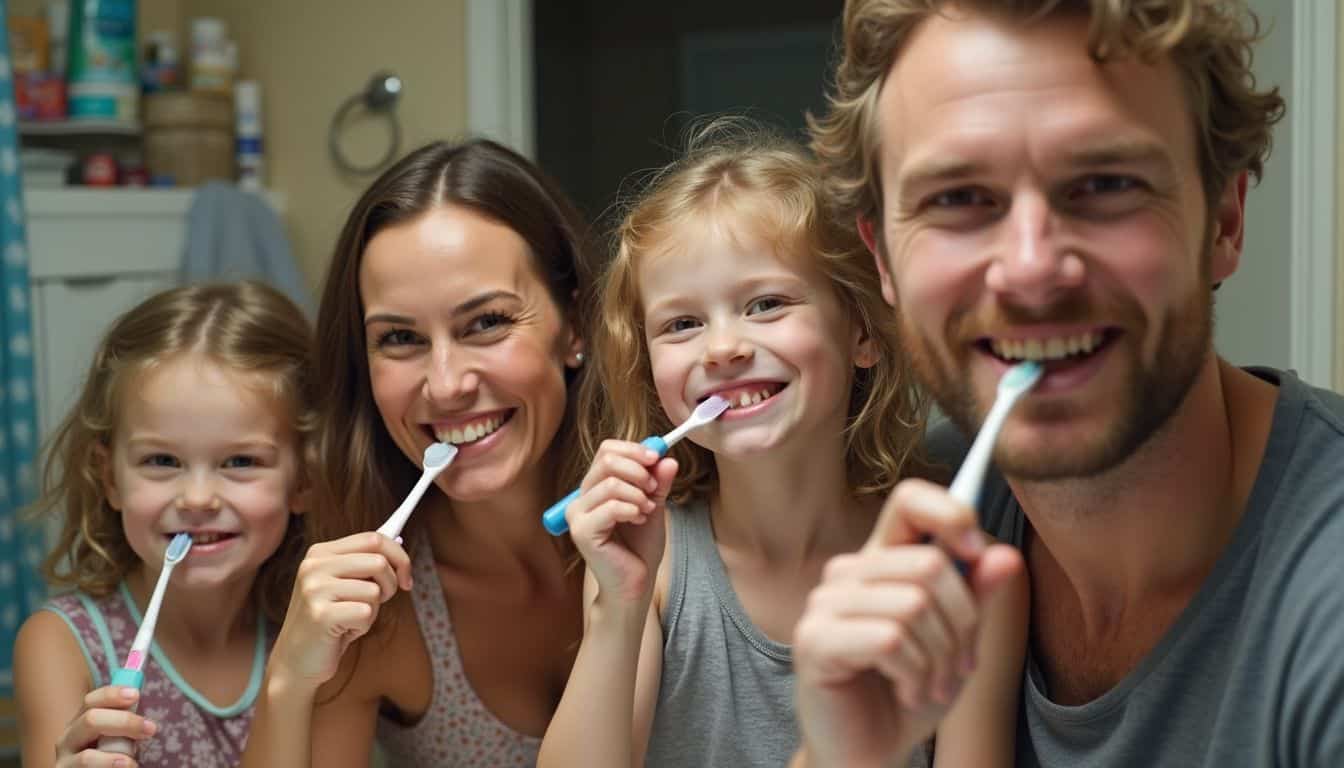Ever feel like a broken record reminding your kids to wash their hands or brush their teeth? You’re definitely not alone. Teaching children hygiene is so important for keeping them healthy and stopping the spread of germs, but it can feel like a real battle.
What if you could skip the nagging and make it fun instead?
I’m going to share some simple, playful steps I’ve used to teach my own kids about personal hygiene. Let’s look at a fresh approach that your kids might actually enjoy.
Key Takeaways
Kids learn best by watching you, so model healthy hygiene habits like proper handwashing, tooth brushing, and nail care. Remember, children often need help brushing until about age 8 and should brush for two minutes, twice a day, with fluoride toothpaste.
Turn hygiene into a game to make it more engaging. Use “glitter hands” to show how germs spread, sing the “Happy Birthday” song twice for 20-second handwashing, or use sticker charts. Fun soaps and small rewards work much better than nagging.
Teach the most important hygiene steps, like washing hands after using the bathroom, before meals, and after sneezing. Encourage daily showers, especially for tweens (ages 9-11) after sports, and explain why cleaning underarms, behind ears, and between toes is key to preventing odor and infections.
Use clear and simple words like “pee,” “poop,” and “wipe” when teaching good toilet habits. For girls, always teach wiping from front to back to help prevent UTIs. And a great habit for everyone is closing the toilet lid before flushing.
In 2025, schools are increasingly focused on hygiene, installing more handwashing stations and using visual tools and educational videos from resources like ClickView to make learning about germs memorable.
Table of Contents
Establishing Good Personal Hygiene Routines
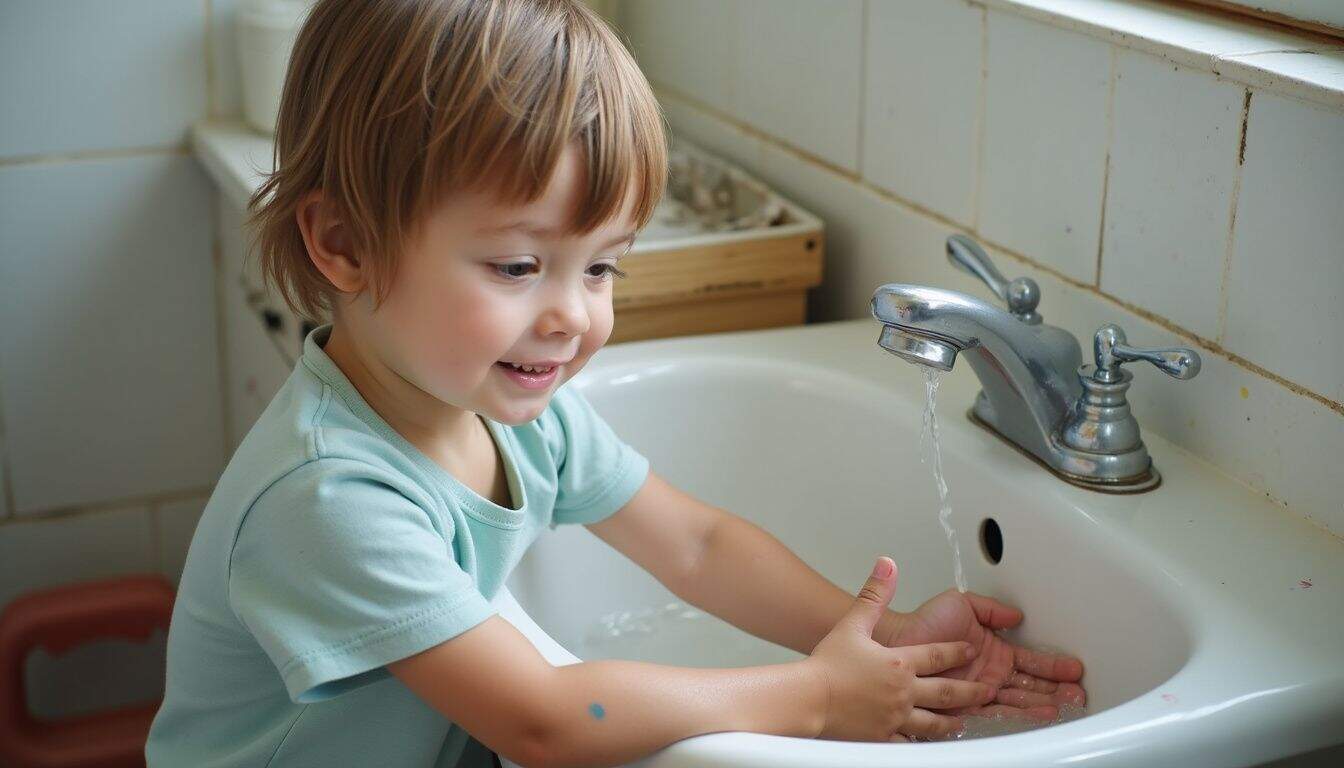
Kids pick up healthy habits much faster when they see the adults around them doing the same things. Simple routines, like hand washing with soap or brushing with fluoride toothpaste, can prevent sickness and keep their smiles bright.
According to Northwestern Medicine pediatrician Dr. Miriam Dreifuss, children thrive on routine. When hygiene tasks happen at the same time every day, kids are more likely to do them without a fuss.
How can I teach kids to wash their hands daily?
Clean hands can save the day by stopping germs in their tracks. The CDC confirms that teaching people about handwashing helps entire communities stay healthy, reducing respiratory illnesses like colds by up to 21%. I’ve taught my own kids how to make it a habit with more fun and less fuss.
- Show the five steps: Wet, lather, scrub, rinse, and dry. Kids love seeing the bubbles, and a fun foaming soap like those from Hello Bello can make it even more exciting.
- Always use soap: Explain that soap is like a superhero that breaks down dirt and fights off germs much better than water alone.
- Sing a song: Scrubbing for 20 seconds is key. Singing “Happy Birthday” twice or the alphabet song works perfectly as a built-in timer.
- Make it a race: Turn it into a game by racing to the sink after messy activities like playing outside or before sitting down for a meal.
- Use fun products: Keep a colorful soap dispenser, like the ones from Soapen that let kids “draw” on their hands with soap, near every sink to attract little hands.
- Wash at key times: Remind them to wash after using the bathroom, before eating, after an achoo or cough, or after petting the dog.
- Tell a story: Talk about invisible germs as stubborn little hitchhikers that won’t leave their fingertips until they’re washed away.
- Model the right way: Let your kids see you performing correct handwashing techniques without taking shortcuts.
- Offer praise: A high-five or a sticker can provide great positive reinforcement. Kids respond so much better to rewards than to constant reminders.
- Be prepared on the go: Keep a bottle of hand sanitizer with at least 60% alcohol in your car or purse for when a sink isn’t available.
You can see some great all natural products that make this easier and safer for your family.
What are the best ways to encourage regular bathing and showering?
Once handwashing is down, it’s time to tackle regular bathing and showering. As kids grow, especially as they approach puberty, things like body odor and oily hair start to become more noticeable.
Here’s how you can make it a positive experience:
- Create a consistent routine. Link bath or shower time to another daily event, like right before bed. This helps build a strong habit.
- Make it fun. For younger kids, bath toys, bubbles, or color-changing bath tablets can turn a chore into playtime.
- Let them choose their products. Allowing your child to pick their own shampoo or body wash at the store gives them a sense of ownership. For tweens, brands like Stryke Club offer products specifically designed for them, which can make them feel more grown-up.
- Talk about the “why.” Explain that washing away sweat and germs is important for their physical health and helps prevent body odor.
- Encourage daily showers for tweens. Once kids are around 9 to 11, especially after sports or on hot days, a daily shower is a good idea. This is also the perfect time to introduce deodorant.
- Teach them to wash everywhere. Remind them to scrub underarms, behind their ears, and between their toes to get rid of odor-causing bacteria and prevent issues like ingrown toenails.
My daughter loved turning her showers into dance parties by playing music from artists like the Spice Girls (“if you wanna be my lover, you gotta get with my friends”). Letting kids use a waterproof speaker can make all the difference!
How do I help kids brush and floss their teeth properly?
Good dental hygiene is crucial for preventing cavities and keeping germs away. With a steady routine, you can make brushing teeth an easy part of the day.
Here’s a step-by-step guide:
- Start early. As soon as that first little tooth appears, start cleaning it with a soft, child-sized toothbrush and water.
- Introduce fluoride toothpaste. Once your child is around two or three, you can start using a pea-sized amount of fluoride toothpaste.
- Brush for two minutes, twice a day. Use a timer or play a two-minute song to make sure they brush for the recommended amount of time. The American Dental Association stresses that this is essential for preventing tooth decay.
- Help them out. Little kids don’t have the coordination to brush properly on their own, so you should help them until they are about eight years old.
- Show them how. Guide their hand to show them how to clean the front, back, and chewing surfaces of every tooth.
- Introduce dental floss. As soon as two teeth touch, it’s time to start flossing. Kid-friendly flossers like Plackers Kids’ Dental Flossers make it much easier for little hands.
- Make it fun. Watch videos about brushing or sing songs like “Brush Brush Brush Your Teeth.” An electric toothbrush with a connected app, like the Philips Sonicare for Kids, can turn brushing into an interactive game.
- Schedule regular dental check-ups. Visiting a dentist for professional cleaning is key. You can find great information from pediatric dentistry experts to prepare for your visit.
- Brush alongside them. One of the best ways for kids to learn is by watching you. Modeling good habits is incredibly effective.
- Read books about it. Find stories where their favorite characters go to the dentist or learn about fighting “sugar bugs.”
If you’re curious about the difference between certain medical terms, this article on paediatric vs child can be helpful.
How can I make hygiene fun and engaging for kids?
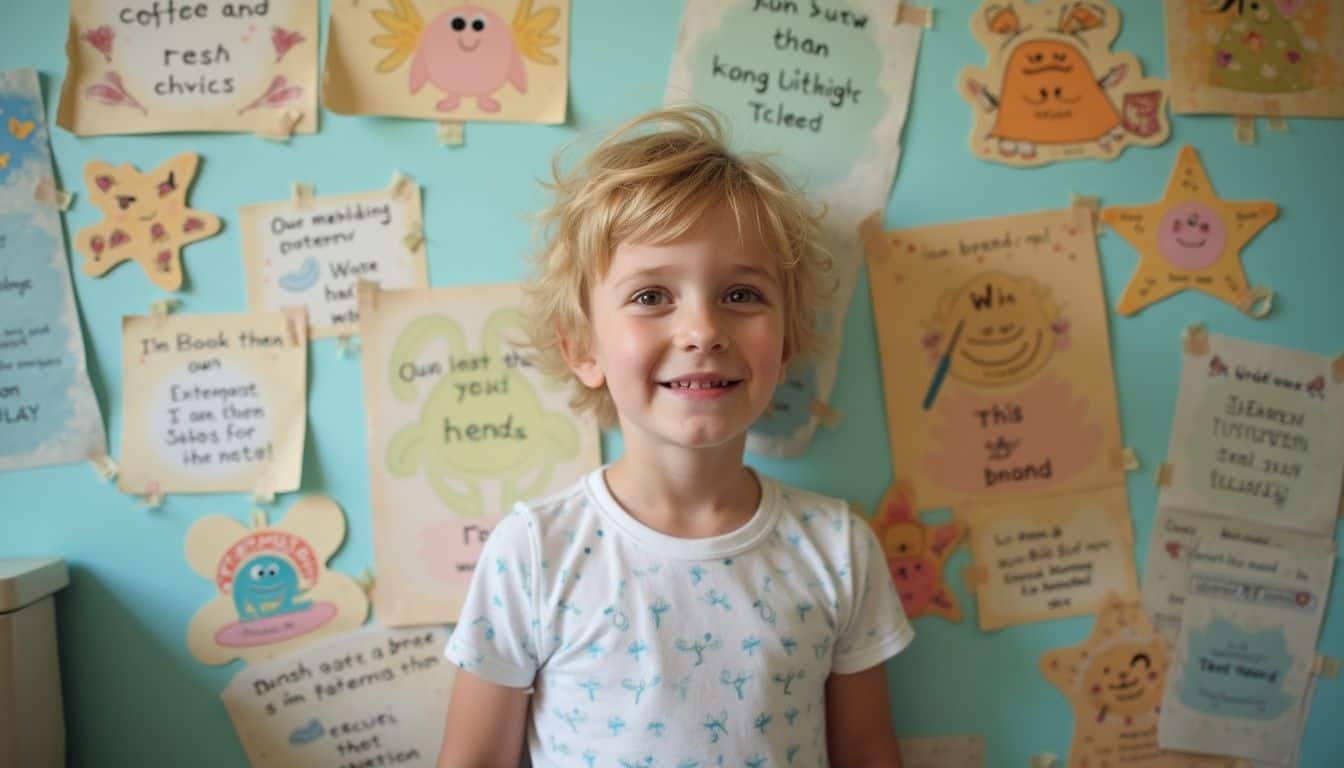
The secret to teaching personal hygiene without the drama is to make it feel like playtime. A catchy song for handwashing or a silly timer for brushing teeth can work wonders. A sticker chart on the bathroom wall can also turn tasks like scrubbing fingernails into a little celebration.
What songs and games make hygiene enjoyable?
You don’t need to be a pop star to make hygiene fun, just a little bit silly and creative. Fun tunes and games can make these lessons stick.
- Make up your own songs. Create a “Brushing Teeth Boogie” with your child’s name in it to get them excited.
- Use the glitter hands game. This is a classic for a reason! Sprinkle a little glitter on their hands and explain that the glitter is like germs. They’ll see that it takes soap and thorough scrubbing to get it all off.
- Try the pepper and soap experiment. Sprinkle black pepper into a bowl of water and tell them the pepper represents germs. Then, have them dip a soapy finger into the water and watch the “germs” scatter! It’s a great visual.
- Play hygiene charades. Have them act out brushing hair, tongue cleaning, or clipping fingernails and toenails. It’s a hilarious way to reinforce the concepts.
- Create hygiene bingo. Make bingo cards with pictures of tasks like hair washing or putting the toilet seat down. When they get a bingo, celebrate with a cheer or a small, non-sugary reward.
- Watch educational shows. Many shows have episodes dedicated to hygiene. For example, “Daniel Tiger’s Neighborhood” has great songs about potty time and washing hands.
How do I reward kids for good hygiene habits?
While games make it fun in the moment, positive rewards are what build habits that last a lifetime. But you don’t need to hand out candy or expensive gifts.
Here are some simple ideas that work:
- Use sticker charts. They are a fantastic visual tool for tracking progress. I keep one on our fridge, and my daughter loves adding a star after she washes her hands before dinner.
- Offer sincere praise. A simple, “Wow, you did an amazing job brushing your teeth all by yourself!” can make a child’s face light up.
- Let them choose fun products. Let them pick out colorful toothbrushes with their favorite characters from brands like Oral-B, or fun, animal-shaped soaps.
- Give them small privileges. Extra screen time, choosing the family movie, or getting to stay up 15 minutes later are all powerful motivators.
- Create a “Hygiene Hall of Fame.” Take pictures of them proudly showing off their clean hands or sparkling teeth and display them in the bathroom. It celebrates their independence and builds confidence.
According to Dr. Laura Jana, a pediatrician and author, consistency is key when it comes to rewards. When kids know what to expect, they are more likely to build lifelong habits.
Teaching Key Hygiene Practices
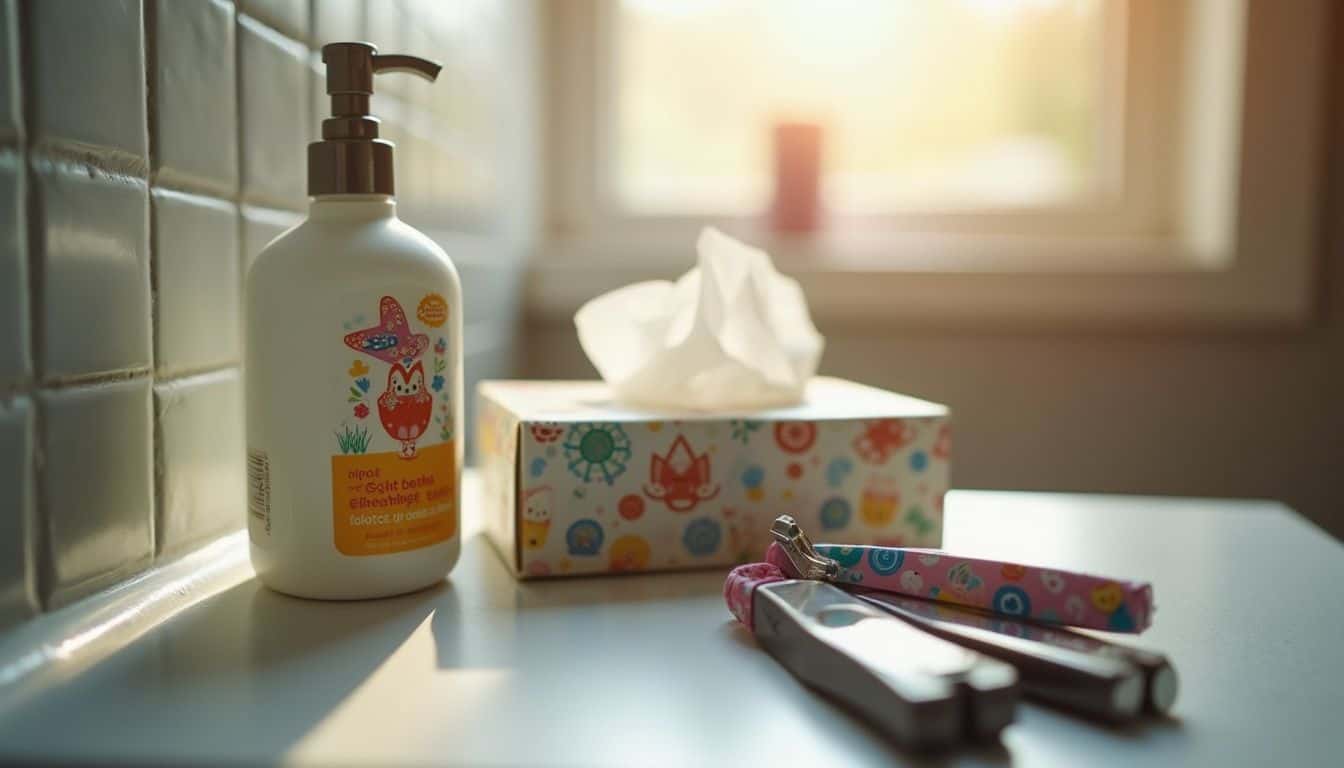
Hand soap can feel like a magic trick to a little one. Tissues and nail clippers can become the tools in their daily superhero routine. It’s all about how you frame it.
How do I teach proper toilet hygiene to children?
Teaching good bathroom habits early on sets your child up for a cleaner and healthier future. This is a big step that goes beyond just potty training.
- Make clothes easy. Dress them in pants with elastic waistbands so they can pull them up and down easily in a hurry.
- Keep toilet paper within reach. Teach them to take just enough to get the job done, and show them how to wipe until the paper is clean.
- Use clear and simple words. Don’t be afraid to use words like “pee,” “poop,” and “wipe.” It avoids confusion and helps them communicate their needs clearly.
- Teach girls to wipe front to back. This is so important for preventing the spread of bacteria that can cause urinary tract infections (UTIs).
- Close the lid before flushing. This simple step can prevent invisible germs from spraying into the air, a phenomenon known as “toilet plume.”
- Make handwashing automatic. Teach them that washing their hands with soap for 20 seconds is a non-negotiable step after every single trip to the bathroom.
- Set a schedule. Encourage bathroom visits at regular times, like first thing in the morning and before leaving the house, to build a routine.
- Be patient with accidents. Everyone has them. Stay calm and positive, and let them know it’s just a part of learning.
What is the best way to teach kids to cover coughs and sneezes?
Kids are notorious for spreading germs, especially through coughs and sneezes. Teaching them how to cover up properly is a huge step in keeping everyone in the family healthy.
- Introduce the “vampire cough.” This is a fun way to teach them to cough or sneeze into their elbow. Have them pretend to pull a vampire cape over their face.
- Explain the “why.” Tell them that germs are like tiny invisible paintballs that can fly out of their mouth and get on their friends. Sneezing into an elbow or a tissue keeps the “paintballs” contained.
- Make tissues accessible. Keep boxes of tissues around the house and in their backpacks. Show them how to use one and then throw it straight into the trash can.
- Wash hands immediately. After they cough, sneeze, or blow their nose, the next step is always to wash their hands. The CDC recommends scrubbing for at least 20 seconds with soap and water.
- Model it yourself. Whenever you feel a sneeze coming on, make a big show of grabbing a tissue or using the vampire cough. They are always watching you!
How can I help kids keep their nails clean and trimmed?
After coughs and sneezes, nail care is next on the list. Little hands touch everything, and fingernails can become a hiding spot for all sorts of germs.
Here are some tips for tear-free nail care:
- Set a schedule. Pick a consistent time each week for “nail time,” like Sunday evenings after their bath when nails are softer.
- Use the right tools. Use child-safe clippers, like the Safety 1st Steady Grip Nail Clipper, or small scissors designed for kids.
- Cut straight across. Trim fingernails straight across and then round the corners slightly to prevent sharp edges.
- File away rough spots. Use a gentle nail file or emery board to smooth any snags.
- Teach them to scrub. Show them how to use a soft nail brush to clean under their nails during handwashing.
- Don’t cut cuticles. Explain that cuticles are there to protect their nails from infection.
- Keep nails short. For active kids, shorter nails are less likely to collect dirt or break during playtime.
How can I lead by example to teach personal hygiene?
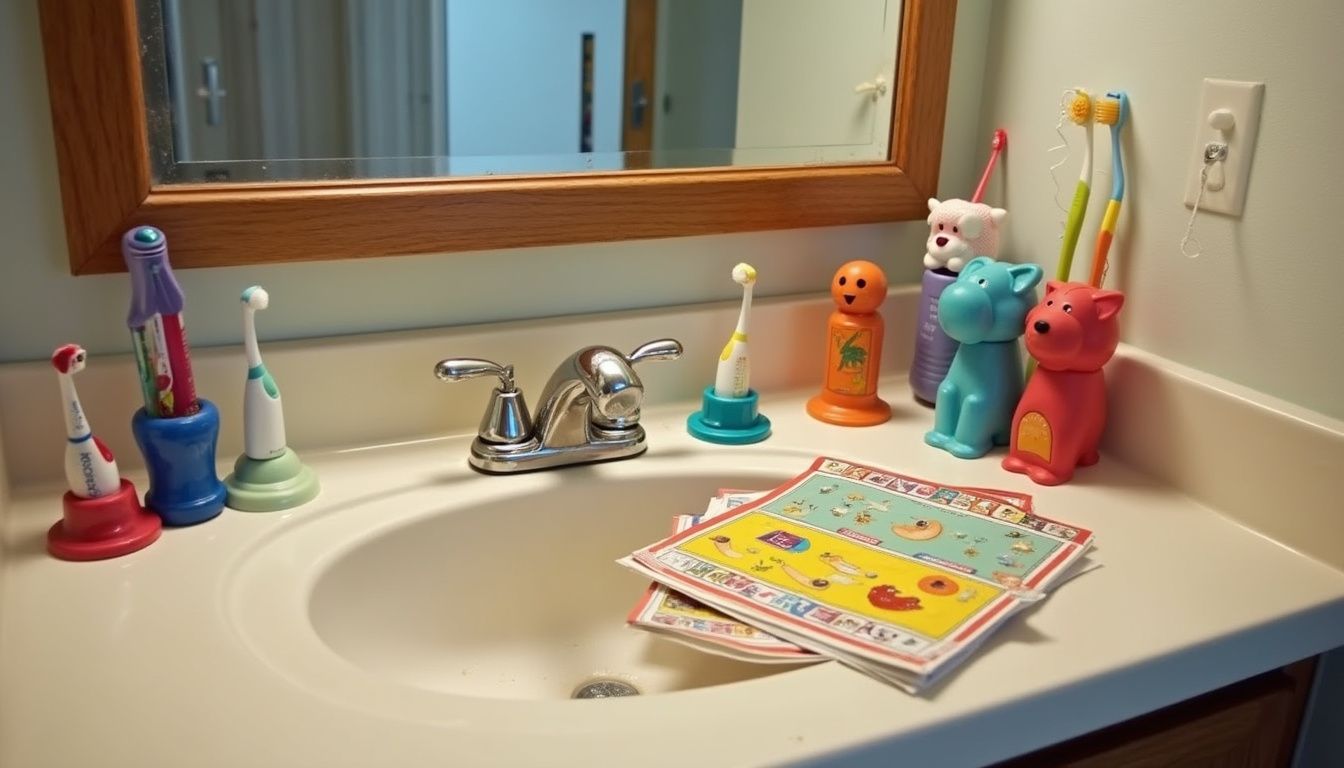
Kids are little sponges, and they notice everything. They see you wash your hands before you cook, floss your teeth after dinner, and toss used tissues in the trash. My daughter once caught me skipping mouthwash and gave me a look that said, “Really, Mom?”
That’s why it’s so powerful to practice good personal hygiene habits right alongside them. When you make it a normal part of your own day, it becomes a normal part of theirs.
Hang up a hygiene chart in the bathroom and let them see you check off your own boxes. Talk about why these routines matter without making it a boring lecture. I like to explain that germs are like tiny, invisible bugs that can make our tummies hurt, a concept made popular in many kids’ books like “Germs Are Not for Sharing” by Elizabeth Verdick.
Use a toothbrush timer with them or sing a silly song while you both scrub. When they see you taking care of yourself, they learn that hygiene is a form of self-care, not just another chore.
How will teaching kids personal hygiene change in 2025?
Recent disease outbreaks have definitely put a bigger spotlight on handwashing, especially in schools. It’s becoming more common to see handwashing stations outside of classrooms and on playgrounds, not just in the bathrooms.
Schools are getting creative, too. Many are now following updated CDC infection prevention guidelines by incorporating group hand scrubs into the daily routine, almost like a fire drill. According to a 2024 survey, 63% of parents actively encourage their children to wash their hands, showing a strong partnership between home and school.
To make the lessons stick, teachers are using engaging visual displays, like posters that show how germs spread using paint that glows under a blacklight. You’ll also see more health workers visiting schools to give fun demonstrations.
Families are also getting more support at home with links to educational apps and resources from platforms like BrainPOP Jr. and ClickView. These tools use videos and games to reinforce what kids are learning in the classroom.
People Also Ask
How can I teach my child personal hygiene without nagging?
Make routines playful by turning handwashing into a song contest; singing the “Baby Shark” song while scrubbing is a fun way to ensure the recommended 20 seconds of washing. You can also try a game-based app like Pepi Bath, which turns self-care into an engaging activity for kids.
What are some fun ways to help kids remember good hygiene habits?
Try reading books that make hygiene an adventure, like “Sugarbug Doug,” which helps kids visualize fighting off cavity-causing “sugar bugs” on their teeth. Pairing stories with a visual sticker chart, which you can find as free printables online, helps children track their progress and celebrate their clean habits.
Why do kids resist learning about personal cleanliness?
Young children often see hygiene as a boring chore that interrupts their playtime, and this resistance is a normal part of developing their independence.
When should I start teaching my child about proper self-care routines?
You can start teaching the basics of hygiene like handwashing and teeth brushing between the ages of two and three, as this is when children begin building the independence to learn these habits.
References
https://www.cdc.gov/clean-hands/prevention/index.html (2024-04-17)
https://www.connecticutchildrens.org/growing-healthy/personal-hygiene-milestones-guide-parents (2024-12-23)
https://www.healthdirect.gov.au/personal-hygiene-for-children
https://wvpd.com/fun-ways-to-introduce-brushing-and-flossing-to-your-little-ones/ (2024-03-23)
https://lingokids.com/blog/posts/5-activities-to-teach-kids-about-personal-hygiene
https://www.henryford.com/Blog/2021/04/Teaching-Your-Child-Personal-Hygiene (2021-04-28)
https://www.cdc.gov/hygiene/about/coughing-and-sneezing.html (2024-04-16)
https://www.aad.org/public/everyday-care/nail-care-secrets/basics/nail-care (2023-11-14)
https://www.cdc.gov/hygiene/about/nail-hygiene.html (2024-04-16)
https://www.nm.org/healthbeat/healthy-tips/emotional-health/Personal-Hygiene-for-Kids
